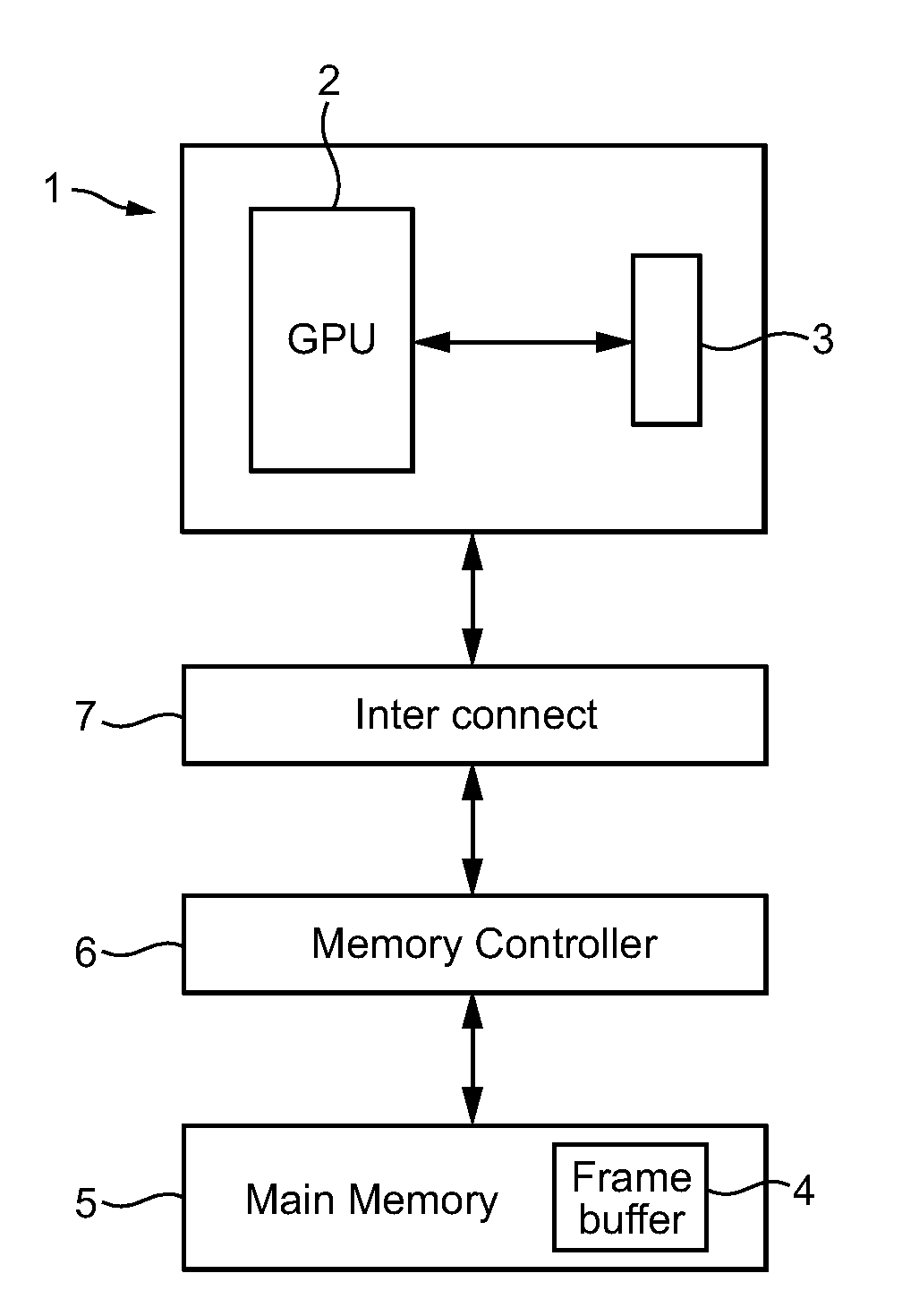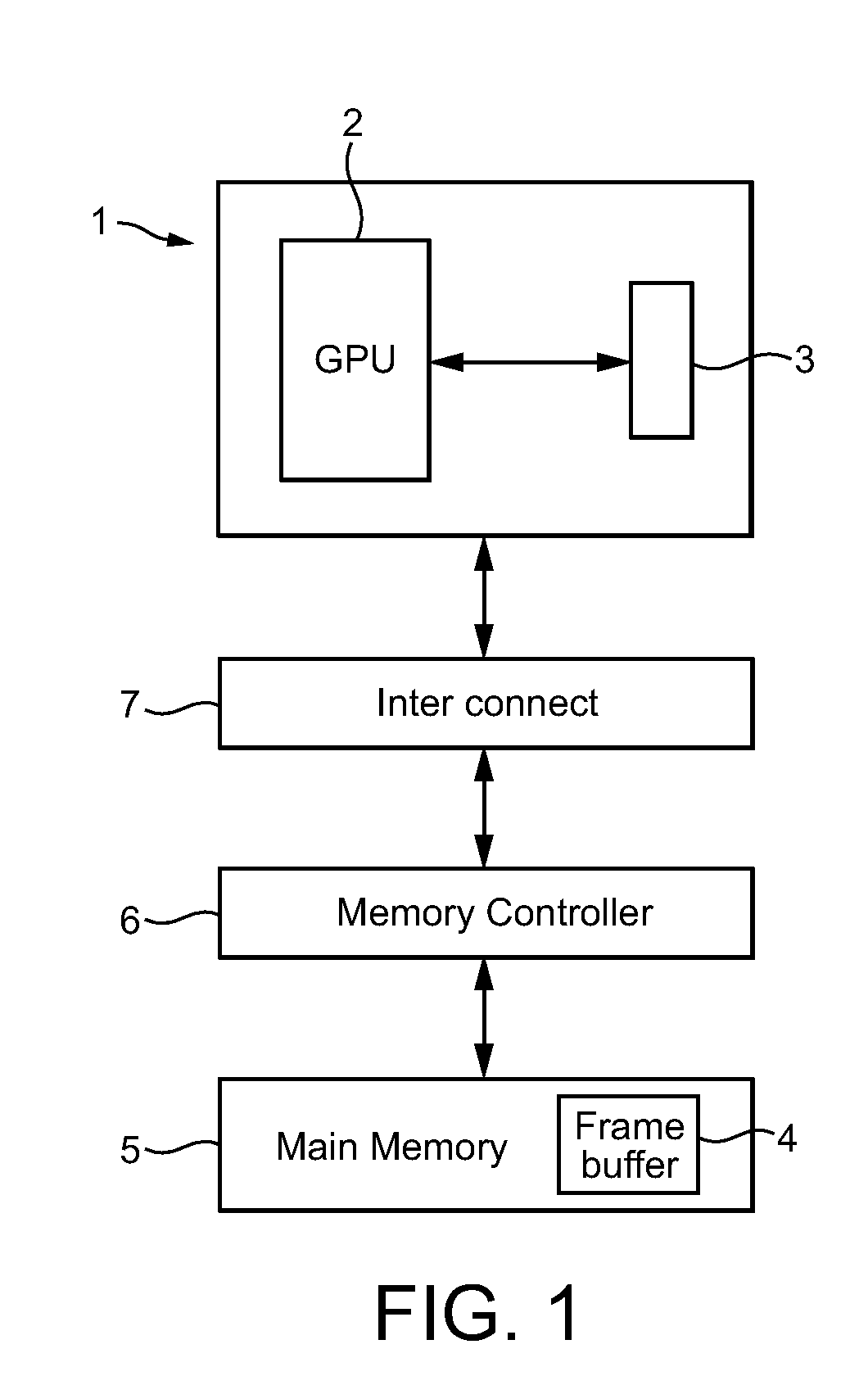Occlusion queries in graphics processing
a graphics processing and query technology, applied in image data processing, image data processing details, instruments, etc., can solve problems such as query queries
- Summary
- Abstract
- Description
- Claims
- Application Information
AI Technical Summary
Benefits of technology
Problems solved by technology
Method used
Image
Examples
first embodiment
[0018]the technology described herein comprises a method of performing occlusion queries in a graphics processing system, the method comprising:
[0019]when an occlusion query is to be performed:
[0020]allocating an occlusion counter for the occlusion query in a main memory of or associated with the graphics processing system;
[0021]providing in a local memory of or associated with the graphics processing system, a local occlusion counter to be used for the respective occlusion query; and
[0022]using the local occlusion counter in the local memory to count results of the occlusion query; and
[0023]once the local occlusion counter in the local memory has counted results of the occlusion query, writing the counter value for the local occlusion counter from the local memory to the allocated occlusion counter for the occlusion query in a main memory of or associated with the graphics processing system.
second embodiment
[0024]the technology described herein comprises a graphics processing system comprising:
[0025]at least one graphics processing core;
[0026]a local memory associated with the at least one graphics processing core; and
[0027]a main memory of or associated with the graphics processing system; and wherein
[0028]the graphics processing system is configured to, when an occlusion query is to be performed:
[0029]allocate an occlusion counter for the occlusion query in the main memory of or associated with the graphics processing system;
[0030]provide in the local memory associated with the at least one graphics processing core, a local occlusion counter to be used for the respective occlusion query;
[0031]use the local occlusion counter in the local memory to count results of the occlusion query; and
[0032]once the local occlusion counter in the local memory has counted results of the occlusion query, write the counter value for the local occlusion counter from the local memory to the allocated oc...
third embodiment
[0067]Thus, the technology described herein comprises a method of performing occlusion queries in a graphics processing system in which a counter for an occlusion query is maintained in a cache memory associated with the graphics processing system and written back to main memory for the graphics processing system for further processing, the method comprising:
[0068]when a new counter in the cache memory is to be allocated to an occlusion query, sending a memory request to the main memory to load a previous counter value for that occlusion query that is stored in the main memory;
[0069]using the occlusion counter in the cache memory to maintain a temporary count of the results of the occlusion query whilst waiting for the memory request to the main memory to complete; and
[0070]when the previous counter value for the occlusion query from the main memory is returned in response to the memory request, combining that loaded previous counter value with the temporary value being maintained b...
PUM
 Login to View More
Login to View More Abstract
Description
Claims
Application Information
 Login to View More
Login to View More - Generate Ideas
- Intellectual Property
- Life Sciences
- Materials
- Tech Scout
- Unparalleled Data Quality
- Higher Quality Content
- 60% Fewer Hallucinations
Browse by: Latest US Patents, China's latest patents, Technical Efficacy Thesaurus, Application Domain, Technology Topic, Popular Technical Reports.
© 2025 PatSnap. All rights reserved.Legal|Privacy policy|Modern Slavery Act Transparency Statement|Sitemap|About US| Contact US: help@patsnap.com



